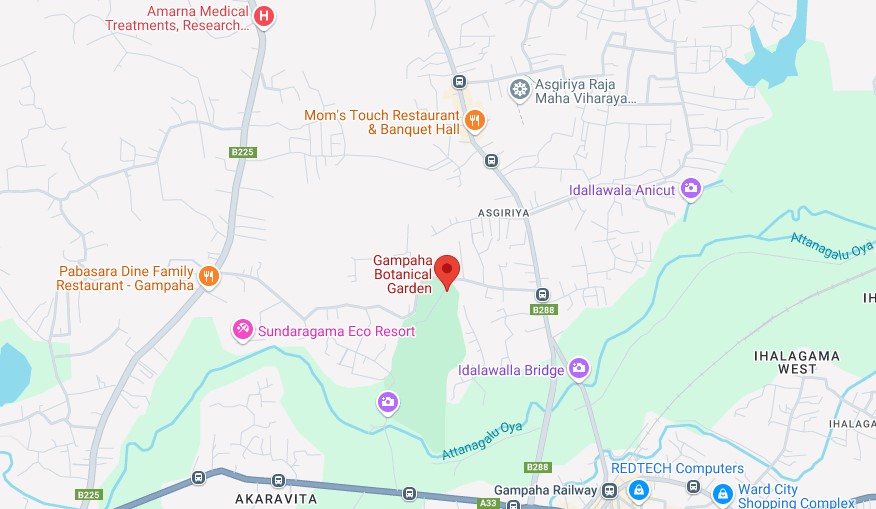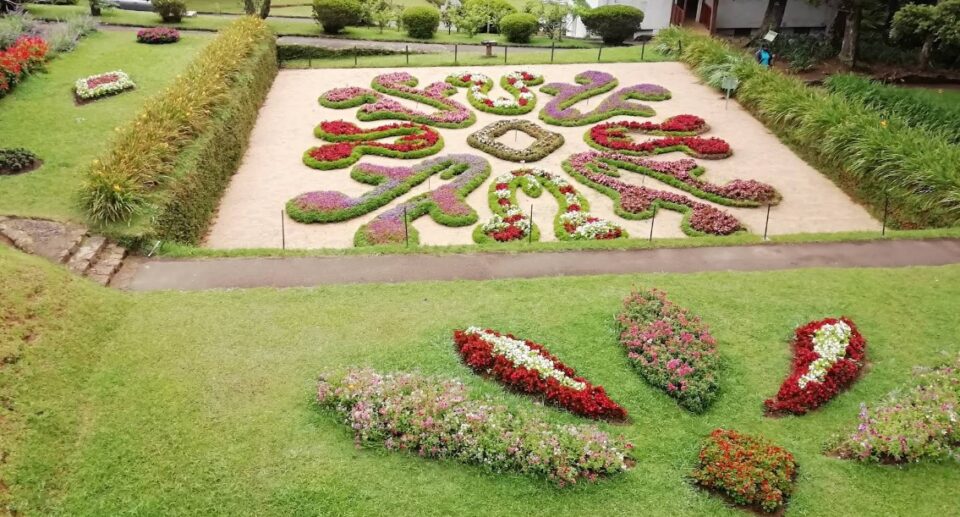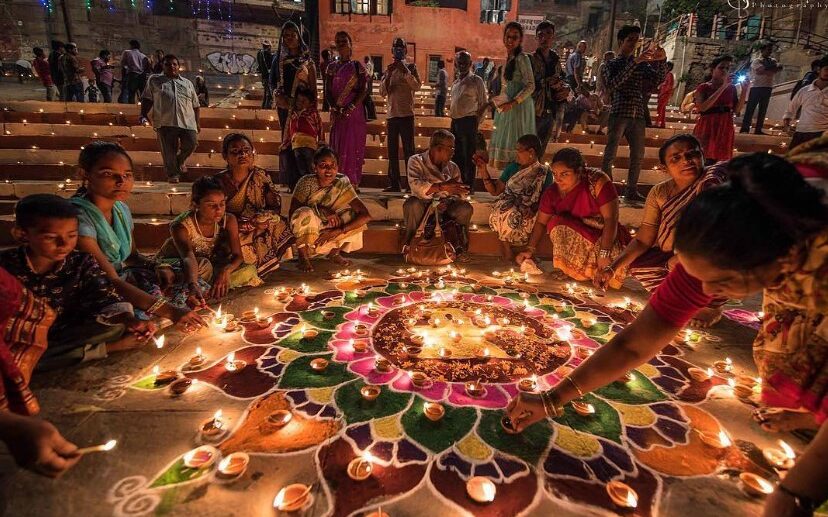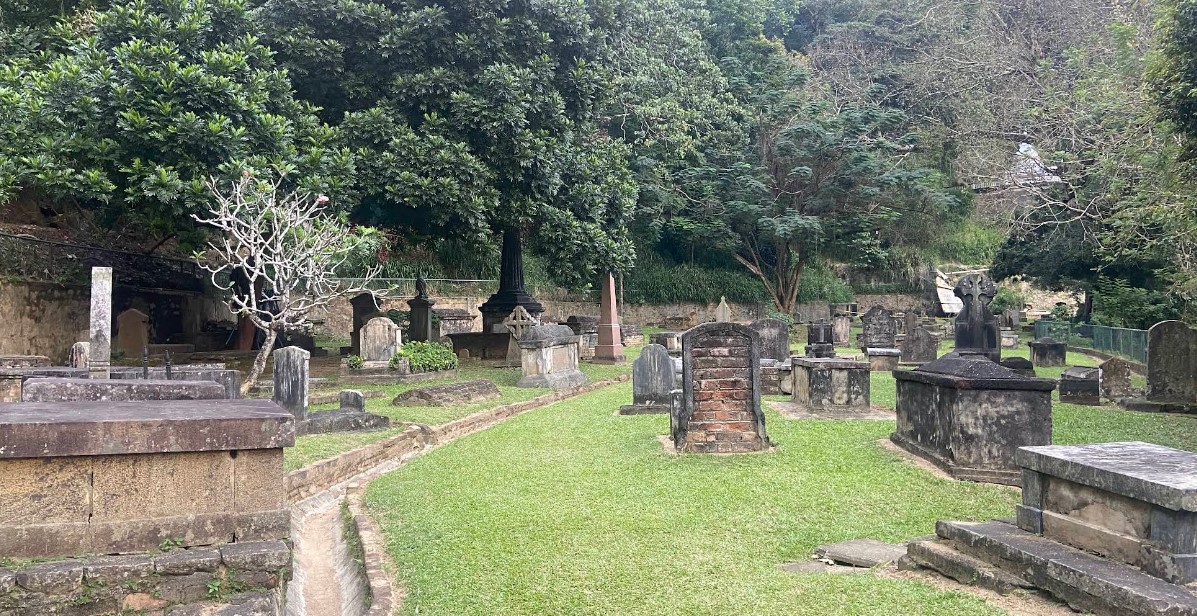Henarathgoda Botanical Garden: A Legacy of Beauty and Diversity
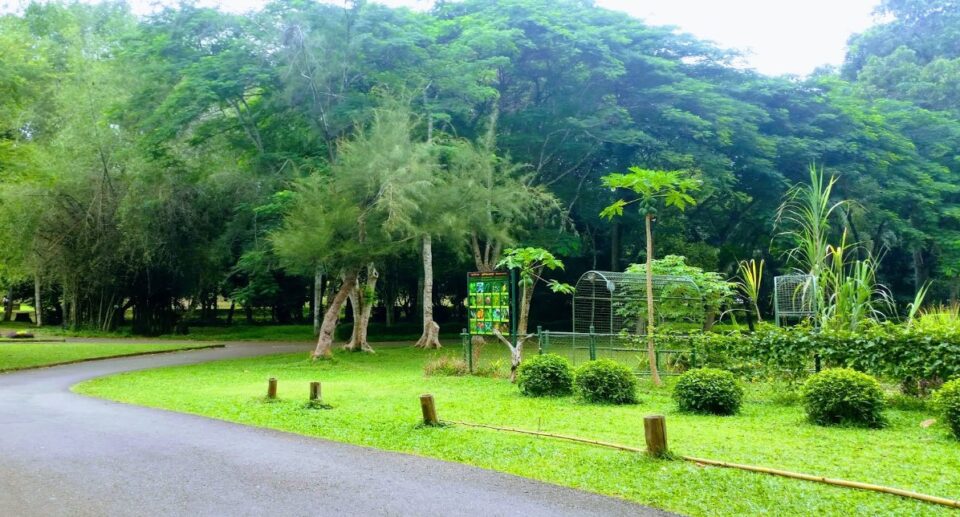
Located in Gampaha, a good 30 kilometers to the northeast of Colombo, the Henarathgoda Botanical Garden is one of Sri Lanka’s lesser-known but historically notable botanical gardens. Established in 1876, the garden is famous for having been the place where rubber (Hevea brasiliensis) was first planted with success in Asia, thus altering the economic landscape of the region later on. Henarathgoda Botanical Garden is now a peaceful oasis full of plant life, colonial history, and environmental importance.
Historical Significance: The Birthplace of Rubber in Asia
Henarathgoda Botanical Garden plays a singular role in Sri Lankan as well as Asian agricultural history. It was created during the British colonial era as an experimental station for the introduction of commercially valuable crops to the island. In 1876, a dozen seedlings of rubber were brought from the Royal Botanical Gardens, Kew, London, and planted at Henarathgoda under the management of British botanist George Thwaites and later Henry Trimen.
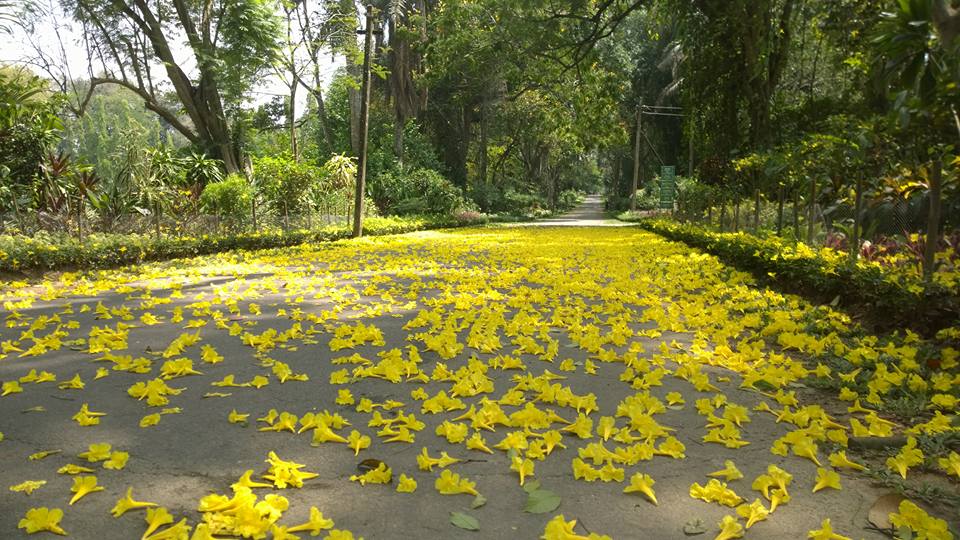
These seedlings were grown under controlled conditions and matured into the first Asian rubber trees. Seeds and seedlings of rubber from here were sent around the island and later to countries such as India, Malaysia, and Thailand, and became the foundation of those countries’ large rubber industries.
One of those very first rubber trees planted still stands today in the garden, preserved as a national monument. The tree stands as a living witness to Henarathgoda’s achievement in Asian agriculture.
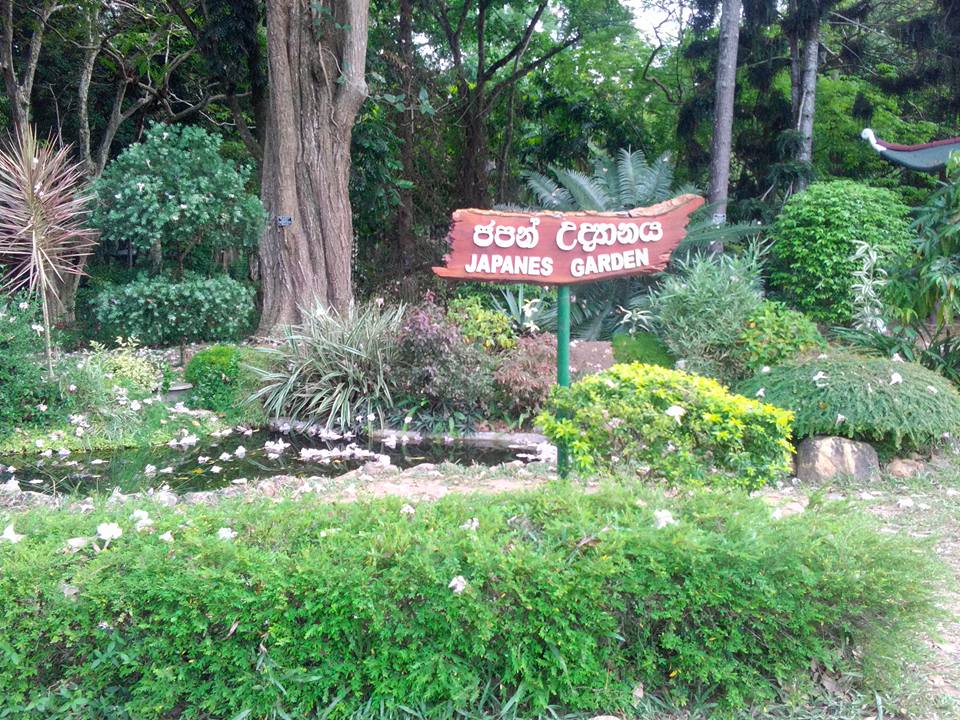
Geographic and Environmental Setting
Henarathgoda Botanical Garden is situated on the banks of the Attanagalu Oya River, which contributes to the region’s verdure and biodiversity. The garden is spread over 43 acres and enjoys a humid tropical climate, which allows for a wide range of plant species. The soil is fertile and soil-rich, and its proximity to Colombo makes it easily accessible while being far enough to possess a countryside, peaceful atmosphere.
The design of the garden follows British colonial landscape design principles, with walks lined with trees, open lawns, and tidily laid-out plant beds. The garden is divided into a number of zones, each highlighting different plant families or uses—ornamental, medicinal, economic, and endemic.
Botanical Collections and Plant Diversity
Though not as extensive as either the Peradeniya or Hakgala gardens, Henarathgoda has a very good variety of flora. The garden, with more than 1,000 plant species, both local and foreign, is particularly well-stocked in economic plants, including rubber, teak, mahogany, ebony, and bamboo.
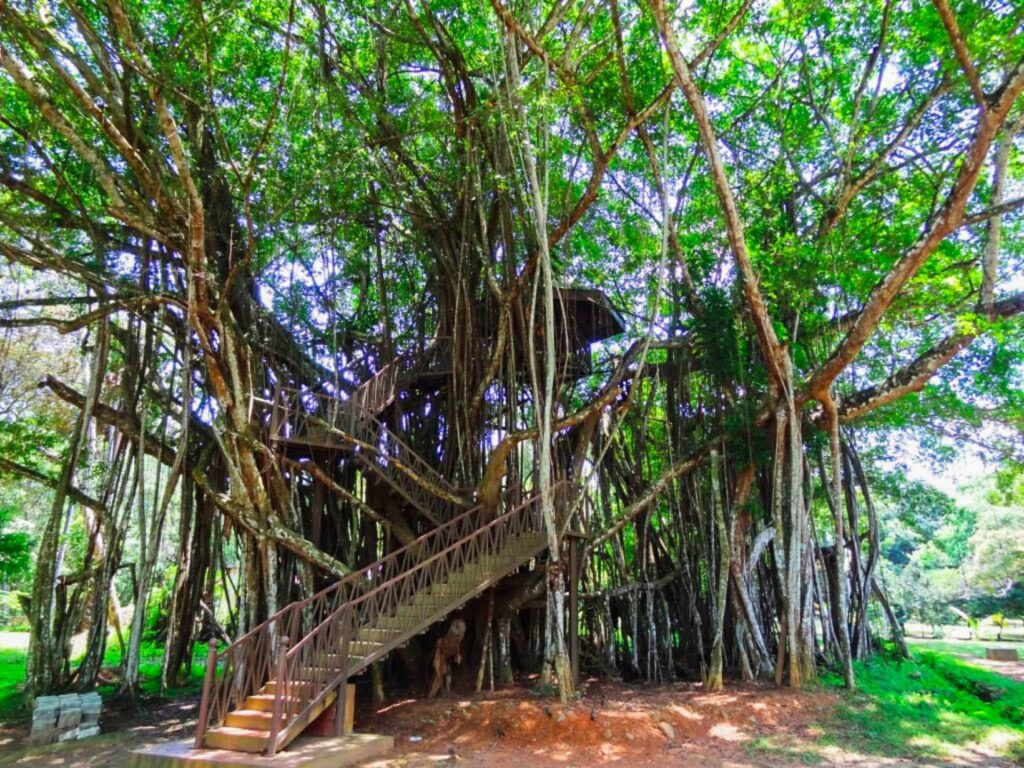
- Rubber Trees and Economic Plants
The pièce de résistance of the visit remains the rubber section, where the original tree from 1876 is still growing. It is surrounded by newer types of rubber trees used in commercial plantations today. The section serves as a museum and an educational space, where one can observe latex extraction, rubber processing, and the global significance of the tree.
Apart from rubber, the garden also has other economically important species that were introduced during colonial times, such as cinnamon, nutmeg, clove, pepper, and cocoa.
- Native and Endemic Flora
Sri Lanka is a biodiversity hot spot, and Henarathgoda makes some effort in conserving native and endemic species. Garden plots are allocated for the native trees and shrubs of Sri Lanka’s wet zone forests. These include Hora (Dipterocarpus zeylanicus), Na (Mesua ferrea), Milla, and several species of Ficus. - Exotic and Ornamental Plants
Henarathgoda is also home to a beautiful collection of ornamental plants, including palms, ferns, bamboos, and flowering shrubs. There are also trees like the African tulip (Spathodea campanulata), golden shower (Cassia fistula), and the canon ball tree (Couroupita guianensis), which bears huge, fragrant, and exotic-looking flowers.
The garden design ensures that every visit is a walk through color, fragrance, and variety. The spring and early summer flowering shrubs and trees create a kaleidoscopic and photographic landscape.
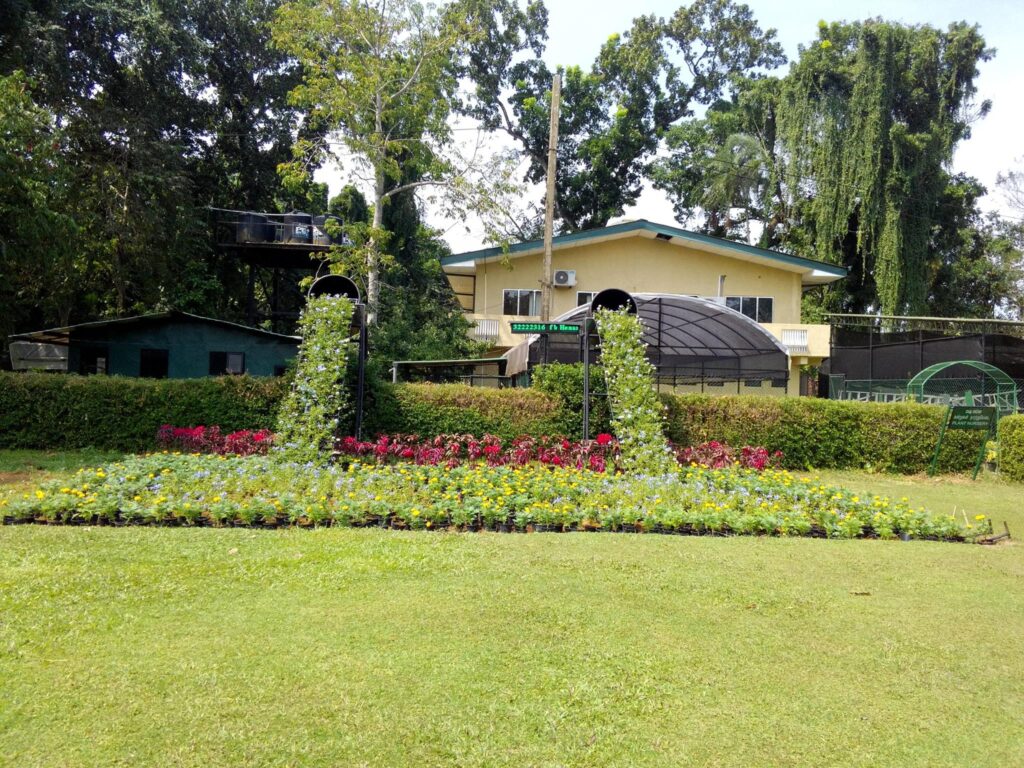
Educational and Research Significance
Henarathgoda Botanical Garden is both a recreational park and a botanical research and educational institution. It is managed by the Department of National Botanic Gardens and functions in collaboration with universities and research institutions.
The garden provides facilities for plant taxonomy, horticultural experiments, and ecological studies. Students of agricultural, botanical, and environmental sciences visit regularly for study tours and field studies.
There is a small herbarium and reference library within the premises, which are utilized primarily by scholars and researchers. These contain valuable information on plant diversity in Sri Lanka and past experimental work at Henarathgoda.
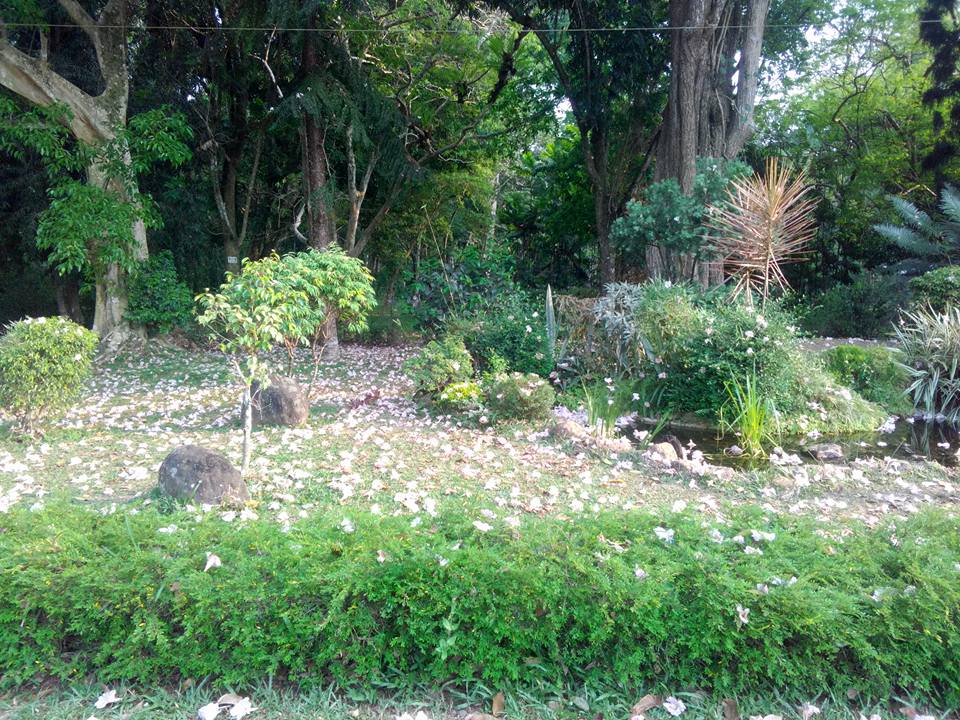
Wildlife and Ecosystem Diversity
The garden’s location near the Attanagalu Oya and its dense foliage have created a mini-ecosystem in which a plethora of wildlife, particularly birds, butterflies, and insects, are found in abundance. Visitors often spot brightly colored birds such as kingfishers, sunbirds, and woodpeckers darting from tree to tree.
Monkeys and small reptiles are occasional visitors, and the range of insects especially pollinators like bees and butterflies is remarkable. All this renders Henarathgoda a paradise for amateur birdwatchers, ecologists, and photographers.
Visitor Experience and Attractions
Despite its scientific and historical significance, Henarathgoda Botanical Garden is a peaceful, relatively uncrowded location. Its tidy pathways, shaded thickets, and riverside picturesque bank are ideal for picnics, student field trips, or simply quiet reflection.
Facilities include: Walking trails and seating benches,Children’s play area,Picnic spaces,Interpretive signage for notable trees and vegetation,Parking and ablution facilities
The garden is busiest during the flowering seasons, particularly March to May, and then October to December when the weather is fine and the vegetation is in full leaf.
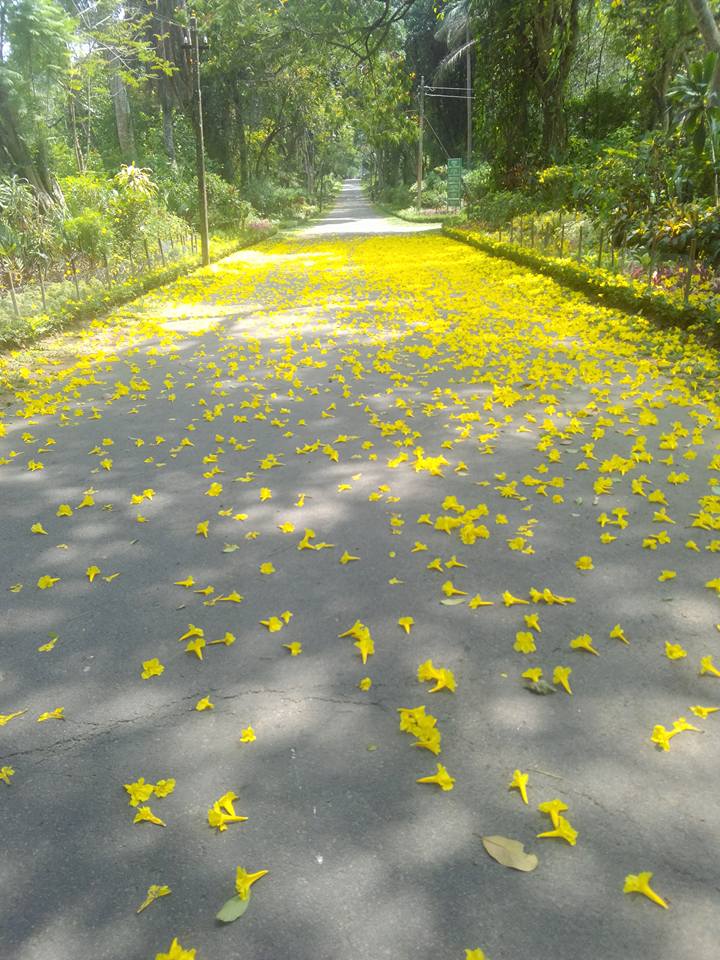
Challenges and Conservation Efforts
Like most public botanical gardens, Henarathgoda also faces challenges of urbanization, climate change, and tourism management. Nevertheless, efforts are being made to enhance its role in plant conservation, public education, and ecotourism.
A few of the recent conservation efforts are: Conservation of endemic and threatened plant species,Promoting awareness on climate resilience through green cover, Digitization of plant records and botanical information
These initiatives ensure that Henarathgoda is not just a place of historical significance, but a valuable part of Sri Lanka’s environmental future.
Cultural and Social Significance
Henarathgoda is, in addition to being a scientific location, a local cultural element. For many residents of Gampaha, the garden is a treasured public area. Children on school field trips, families, and the elderly stop by on a regular basis, so it is an area where generations come together with nature and with each other.
The garden also occasionally hosts environmental awareness activities, tree planting activities, and botanical displays, bringing scientists, teachers, and the general public together in a shared mission of preservation and appreciation.
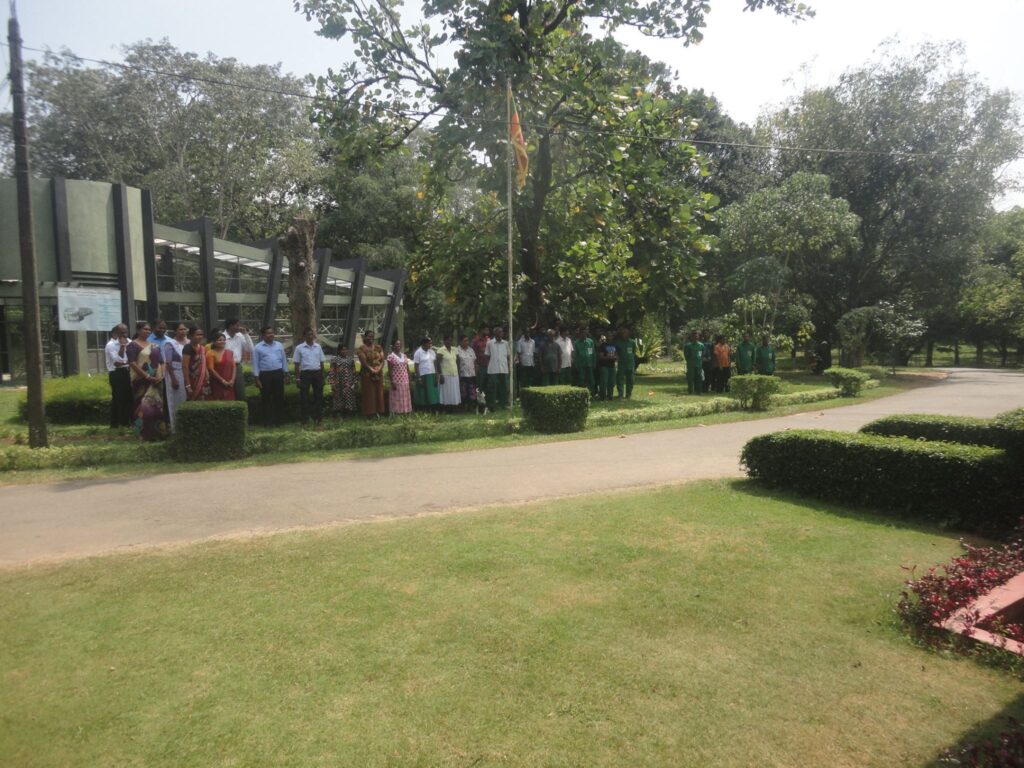
A Historic Garden with a Living Legacy
The Henarathgoda Botanical Garden is not only a tranquil park but also a site of scientific heritage, ecological value, and national pride. As the birthplace of rubber cultivation in Asia and a sanctuary of plant diversity, it holds a permanent place in Sri Lanka’s botanical and colonial history.
While not as globally famous as Peradeniya or Hakgala, Henarathgoda provides something incredibly worthwhile: a personal, authentic, and instructive experience in the midst of nature. Whether historian, botanist, student, or recreationist, Henarathgoda welcomes you to discover the beauty, diversity, and heritage of Sri Lanka’s botanical realm.
Contact Information
Address: 112 Gampaha Fly Over, Gampaha, Sri Lanka
Plants: 2,000
Open Hours
7:30AM – 6PM
Map of Henarathgoda Botanical Garden
